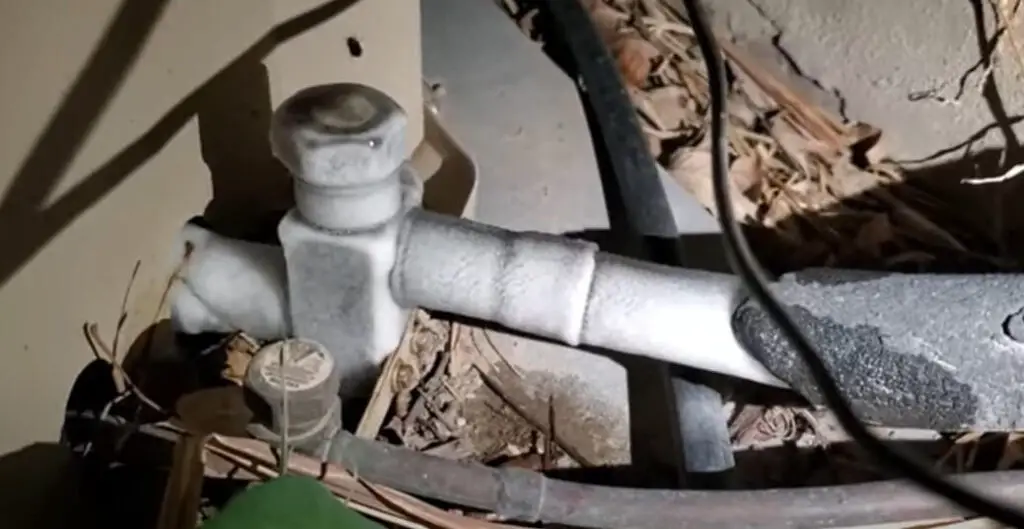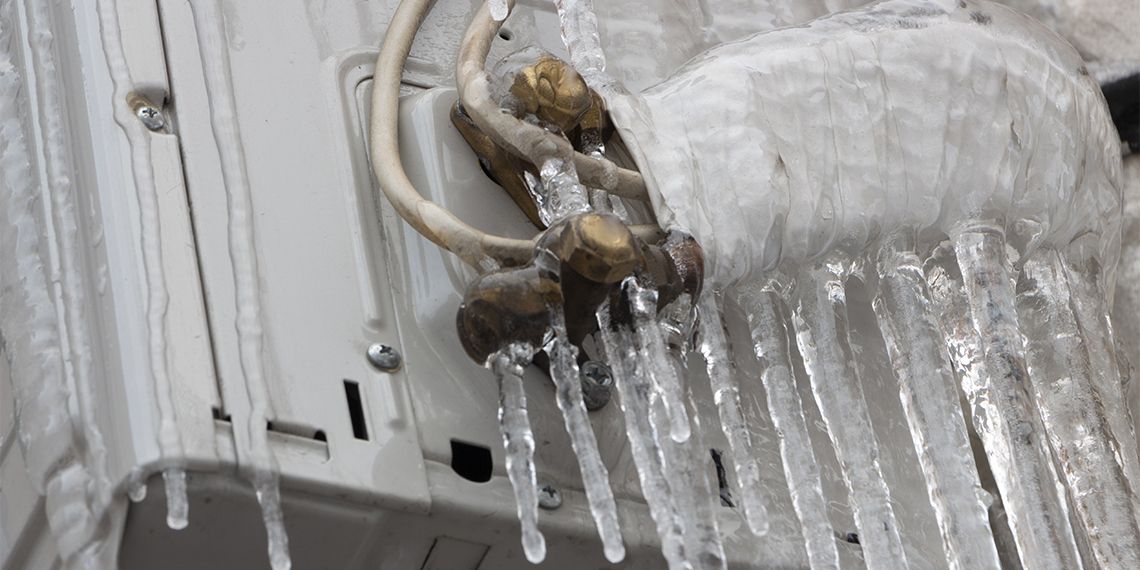The article following next relating to Why Is Ice On My Outside Air Conditione is immensely informative. Give it a try and make your own personal ideas.

Introduction
Finding that your a/c pipeline is iced up can be worrying, especially during hot summer season when you count on your air conditioning system one of the most. Recognizing what to do in such a scenario is crucial to prevent more damage to your cooling system and guarantee your convenience inside your home.
Understanding the Causes
Several elements can add to the cold of an air conditioner pipe. Understanding these reasons can help you deal with the issue successfully.
Lack of Airflow
One typical cause of an icy air conditioning pipe is inadequate air movement. When the air flow over the evaporator coil is limited, it can trigger the coil to go down below freezing temperature, resulting in ice development on the pipe.
Low Refrigerant Levels
Not enough refrigerant levels in your air conditioner system can also lead to an icy pipeline. Reduced refrigerant degrees can create the pressure in the system to drop, resulting in the cold of moisture on the evaporator coil.
Cold Weather Conditions
In cooler climates, freezing temperatures outside can contribute to the freezing of air conditioning pipelines. If your a/c device is not effectively protected or if there are leaks in the ductwork, chilly air can penetrate the system, causing the pipeline to freeze.
Dirty Air Filters
Filthy or clogged air filters can restrict air movement in your a/c system, leading to numerous issues, including an icy pipeline. It's necessary to replace or cleanse your air filters consistently to ensure proper airflow and stop ice build-up.
Signs of a Frozen AC Pipe
Recognizing the indications of a frozen air conditioning pipeline is crucial for punctual action.
Reduced Airflow
If you observe a significant decline in air movement from your vents, it could suggest an icy pipeline.
Ice Buildup on the Pipe
Visible ice buildup on the refrigerant line or the evaporator coil is a clear indication of a frozen air conditioner pipeline.
Odd Sounds from the Unit
Unusual sounds, such as hissing or bubbling, originating from your a/c device can signal that there's ice present on the pipeline.
Immediate Actions to Take
When faced with a frozen AC pipe, it's necessary to act swiftly to avoid further damage to your air conditioning system.
Switching off the air conditioner
The first step is to switch off your air conditioning unit to avoid the system from running and aggravating the issue.
Looking for Blockages
Examine the location around the interior device for any obstructions that may be obstructing air movement, such as furnishings or drapes.
Defrosting the Pipe
You can make use of gentle approaches like putting towels taken in warm water around the icy pipeline to assist thaw it slowly.
Safety nets
Taking safety nets can help prevent future incidents of a frozen AC pipe.
When DIY Methods Fail
If your attempts to thaw the pipeline or address various other issues are unsuccessful, it's time to call a professional.
Importance of Hiring a Professional HVAC Technician
A certified HVAC professional has the expertise and devices necessary to diagnose and fix issues with your air conditioning system securely and properly.
Routine Maintenance Checks
Arrange routine maintenance checks with an expert HVAC specialist to make certain that your a/c system is running efficiently.
Altering Air Filters
Frequently change or cleanse your air filters to prevent air flow restrictions and maintain ideal efficiency.
Insulating Exposed Pipes
If your air conditioner pipelines are subjected to cold temperature levels, think about insulating them to avoid cold throughout cold weather.
Seeking Professional Help
If DIY techniques stop working to settle the concern or if you're not sure regarding how to proceed, it's ideal to look for help from a qualified HVAC technician.
Conclusion
Taking care of an icy AC pipe can be a frustrating experience, but recognizing how to respond can help reduce damage and restore convenience to your home. By comprehending the reasons, identifying the signs, and taking punctual activity, you can effectively address the problem and protect against future incidents.
What to Do If Your AC Line Is Frozen
Make Sure All Supply and Return Air Vents Are Open
If you notice problems with airflow, the first thing you should do is check your supply and return vents. Supply vents distribute clean, conditioned air throughout your home. As this air becomes stale, it’s pulled into the return vent, where it’s reconditioned before being sent back out through the supply vent.
When these vents are closed, air won’t flow in the home. Before examining your AC, check the vents in every room and ensure they’re all open.
Check for a Dirty Air Filter
Another possible cause of limited airflow is a dirty air filter. Your air conditioner’s filters catch elements you don’t want to breathe in, such as dirt and dust. Over time, filters can become clogged, ultimately blocking air from flowing in and out. The lack of airflow can then cause the entire coil to freeze and will completely restrict any air from moving through it. The AC may need to be powered off for one to two days to allow the coil to thaw after replacing the filter to allow proper functioning of the unit. This debris can also accumulate on your AC’s evaporator coil, requiring a more serious repair. In general, air filters should be cleaned regularly (about every two weeks).
Assess Your Outdoor Unit
In addition to checking your AC, assessing the outdoor unit is a good idea. Also known as the condensing unit, it works with your interior unit to release heat outside. An issue with the outdoor unit can result in rising internal temperatures.
Overgrown Shrubs or Clogged Leaves
From leaves and twigs to shrubs and debris, there’s no shortage of outdoor elements that can accumulate around your condensing unit. When these elements get lodged inside the unit, they can block airflow. Fortunately, removing the blockage can solve the problem.
Sounds of a Broken Fan
Shrubs and leaves aren’t the only things that can impede your outdoor unit’s airflow. If the fan is broken, the unit won’t be able to properly get rid of heat — which means the internal temperature won’t go down. First, make sure the fan is spinning. If it is, check for the following sounds of a broken fan:
Buzzing Rattling Screeching Hissing Clicking Preventative Measures
Nobody wants to deal with a frozen AC line. In addition to causing problems with your air conditioner, they require professional repairs. On the bright side, there are preventative measures you can take to help ensure this issue doesn’t arise in the first place.
https://www.coopergreenteam.com/blog/what-to-do-if-ac-line-frozen

As a reader about Have a Frozen AC Line? Here’s How to Fix It, I imagined sharing that piece of content was a good thing. Be sure to take the opportunity to distribute this blog if you enjoyed reading it. I enjoy reading our article about What Causes AC Pipes To Freeze?.
Click Here To Read More